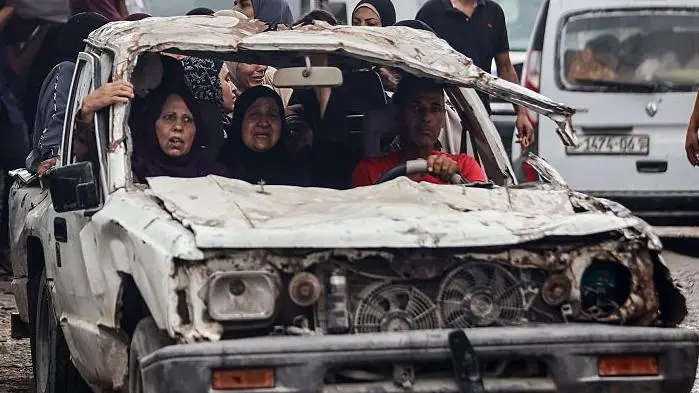Gaza Ceasefire negotiations have entered their second week with little tangible progress, as mediators intensify attempts to bridge the widening gap between Israel and Hamas.
The stalled negotiations come amid a surge in violence and mounting humanitarian concerns across the besieged enclave.
Mediators Seek Breakthrough in Doha Talks
Gaza Ceasefire negotiations are currently underway in Doha, led by U.S., Qatari, and Egyptian mediators, who are exploring innovative mechanisms to resolve key sticking points between the two sides.
The proposed framework includes a 60-day ceasefire, phased hostage and prisoner exchanges, and Israeli troop withdrawals from parts of Gaza.
Despite initial optimism, the talks remain deadlocked.
A source close to the negotiations revealed that discussions are now focused on deployment maps and security guarantees, with mediators pushing for a modified Israeli withdrawal plan acceptable to Hamas.
Gaza Ceasefire Negotiations Delay and Civilian Causalities Rise
According to Gaza’s Civil Defense agency, 28 Palestinians were killed on Monday alone, including 17 in Gaza City and northern governorates.
The ongoing Israeli airstrikes have exacerbated the humanitarian crisis, with hospitals overwhelmed and aid distribution severely disrupted.

Accusations and Political Maneuvering
Hamas has accused Israeli Prime Minister Benjamin Netanyahu of deliberately obstructing Gaza Ceasefire negotiations, citing his refusal to agree to terms that would lead to a permanent ceasefire.
Netanyahu, meanwhile, faces pressure from far-right members of his coalition who oppose any deal that leaves Hamas intact.
U.S. President Donald Trump has expressed continued optimism, stating, “We are talking and hope to reach a settlement within the next week,” echoing similar remarks made on July 4th.
Trump’s administration has backed the current proposal and pledged to personally guarantee Israel’s adherence to the ceasefire terms.
Key Points of the Ceasefire Proposal
| Element | Details |
|---|---|
| Duration | 60-day ceasefire |
| Hostage Exchange | 10 living hostages + 18 deceased returned in phases |
| Prisoner Release | Palestinian detainees released by Israel (numbers TBD) |
| Israeli Withdrawal | Troops to pull back from northern and southern Gaza |
| Humanitarian Aid | Distributed via UN and Red Crescent; GHF involvement remains contested |
| Permanent Truce Negotiations | To begin on Day 1 of ceasefire |
| U.S. Guarantee | Trump to personally announce and oversee ceasefire compliance |
Controversy Over “Humanitarian City” Plan
Israel’s proposal to build a “humanitarian city” in southern Gaza for displaced civilians has sparked international backlash.
Critics liken the plan to a concentration camp, while Netanyahu’s government insists it would provide a safe haven and weaken Hamas’ influence.
The project remains in early planning stages and faces logistical and ethical hurdles.
What’s After Gaza Ceasefire Negotiations?
While both sides have shown conditional openness to the ceasefire framework, the main obstacles remain:
- Hamas demands a guaranteed end to the war and full Israeli withdrawal.
- Israel insists on retaining control over strategic areas and disarming Hamas.
- The fate of aid distribution mechanisms—particularly the controversial Gaza Humanitarian Foundation (GHF)—is still unresolved.
Gaza ceasefire negotiations reflect the complex interplay of political agendas, humanitarian urgency, and regional diplomacy.
As civilian casualties mount and international pressure intensifies, the coming days will be critical in determining whether a temporary truce can evolve into a lasting resolution.
Source: BBC News


